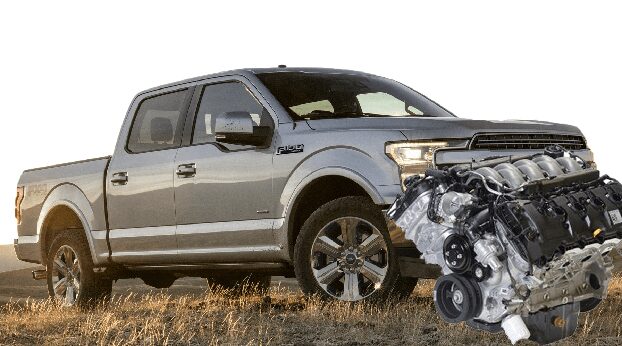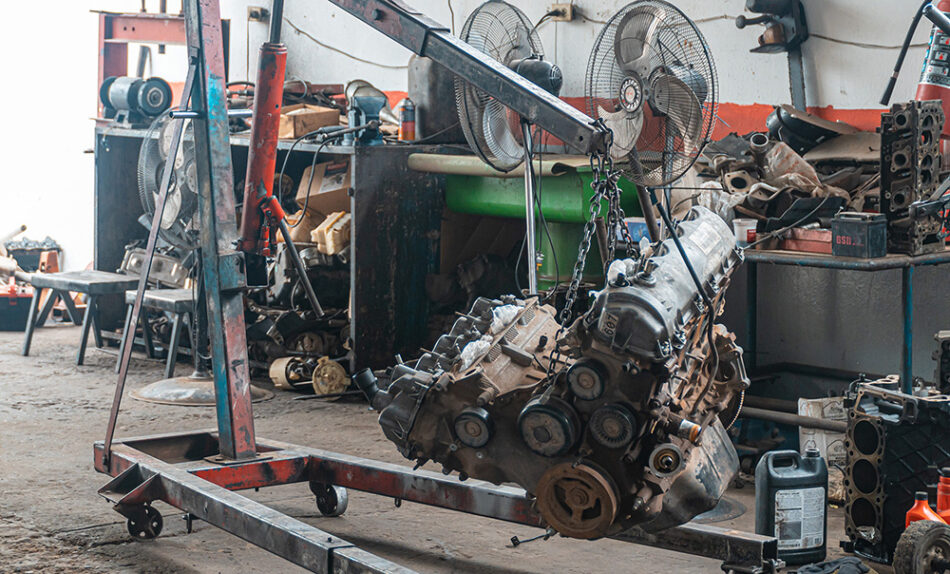5 of the Worst Ford Engines to avoid
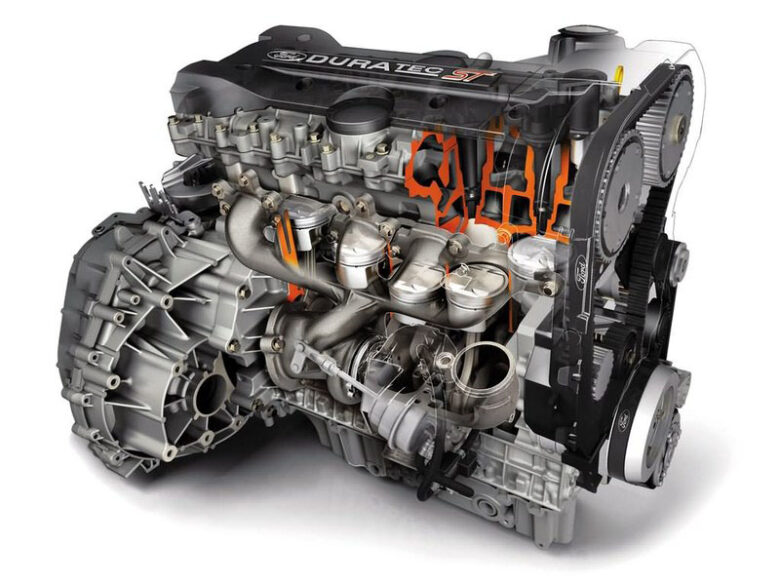
Let’s face it, the Worst Ford engines to avoid sounds like a strange topic but Ford has produced a number of subpar engines that deserve mention.
See back in the day, Ford was on top of the car manufacturers’ game. Producing iconic vehicles such as the Mustang, Explorer, Focus, and F-150. Under the hood of the vehicles mentioned above were solid motors that influenced millions to purchase a Ford model.
Ford however produced vehicles with not-so-good engines. This is the inspiration behind the discussion on the worst ford engines.
It’s not all gloomy despite falling far behind in the top car manufacturers’ index as of 2022, because Ford is still a great household brand.
Let’s discuss the engines in detail and highlight the reasons that have made them unpopular.
Worst Ford Engines - V4 Essex engine

V4 Essex engine in the Ford Corsair
The Ford Essex v4 was manufactured between 1965 and 1977, this V4 gas engine was available in either 1.7L or 2.0 L displacements.
The Mark 1 Transit van was the first to use the Essex V4 engine.
Later, the Essex-based Ford factory used the V4 in the production of the Corsair, Consul, Granada, and Zephyr saloons both for the UK market and also the Americas.
The V4 is a perfect fit for the Mark 1 van, but it was a bad idea in the Corsair and other models. Reports of underpowered engines caused Corsair’s sales to plummet, forcing Ford to consider upgrades.
It is safe to conclude Ford was looking to minimize costs when they designed this engine based on the entry-level cars that use it.
They did not give up…
The V6 engine was introduced. A 2-cylinder addition of the previous V4 with a displacement of 2.5 or 3 liters.
The original concept for the V6 Essex was a diesel engine but it ended up as a gas version. That meant the engine was quite heavy.
This V6 was upgraded to 3.8L and thus gave life to the Grenada, Mustang, Thunderbird, F-Series, Mercury, and Lincoln models.
Besides prevalent gasket failures reported mostly in Grenada, the V6 was less problematic than the V4.
The 4.2 L was the final displacement increase for the 3.8 L up until 2007, when production of this engine was halted.
The next…
Worst Ford Engines - Powerstroke 6.0L Diesel
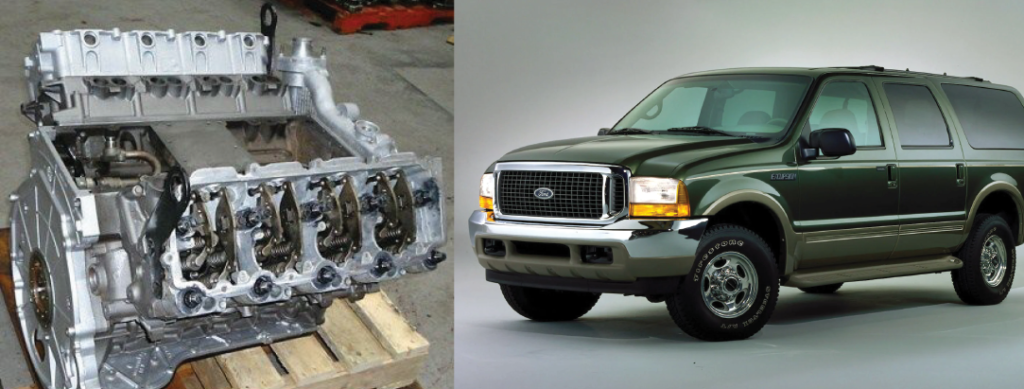
6.0L powerstroke in the Ford Excursion
The Ford Superduty Diesel pickup truck is stunning. A powerful truck that has a slew of enthusiastic owners. Of course, for the sake of appearances, because underneath the hood is a motor with serious heartache. One of the worst ford truck engines.
The power stroke 6.0 diesel has enough flaws to make you dislike this truck.
We are talking about….
- Oil coolant issues – Being a power-hungry rig, cooling is vital but Ford failed in the design of a reliable cooling solution. The cooler fails after clogging with dirt and also takes with it the EGR. The solution is to replace with after-market coolers that are not quite compatible with the engine.
- EGR issues – the problems of the oil cooler cascade to the EGR. It also gives in to debris that clogs it leading to high temperatures. The head gaskets are the first culprits and soon after coolant leaks into the cylinders and the horrendous white smoke can be seen from the exhaust.
- Fuel injectors on this engine are prone to failure and the results are rough start or no start at all, caused by the electronic Fuel Injection Control Module.
- Turbocharger failures are mainly caused by oil and soot build-up from exhaust gases. That leads to delayed throttle response and serious spooling. You might be lucky when you drive the truck long and hard to burn the soot but the oil sludge might need intensive cleanup of the turbocharger to fix this problem.
Worst Ford Engines - Powerstroke 6.4L Diesel
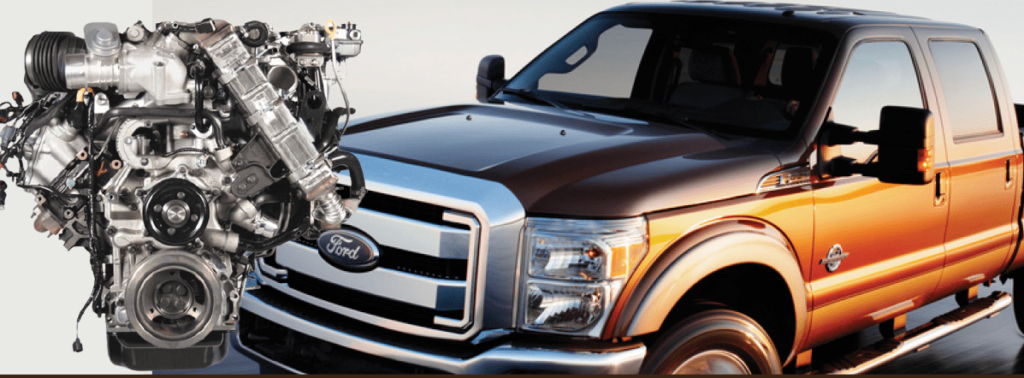
6.4L powerstroke in the F-250
The Ford Powerstroke 6.4 engine made its debut in 2008 as an upgrade over its predecessor, the 6.0L Powerstroke. Developed in collaboration with Navistar, its purpose was to address the reliability issues experienced by the previous model and offer increased power to truck enthusiasts.
According to Ford enthusiasts, the development of the 6.0L engine was rushed in an attempt to rectify the problems, which unfortunately resulted in a less favorable solution.
Primarily used in Ford Super Duty trucks such as the F-250 and F-350, the Powerstroke 6.4 engine is a V8 turbocharged diesel engine designed to provide exceptional torque and towing capacity.
With a displacement of 6.4 liters, it possesses substantial power, boasting an impressive output ranging from 350 to 400 horsepower, depending on the specific model and year.
A notable feature of the Powerstroke 6.4 engine is its twin-turbocharger system, which collaborates to enhance power delivery and minimize turbo lag.
This results in a smoother and more responsive driving experience. Furthermore, this setup contributes to improved fuel efficiency, a desirable characteristic for any vehicle.
In terms of durability, Ford made significant improvements with the 6.4 engine compared to its predecessor. Upgrades were made to the engine block, cylinder heads, and pistons to enhance strength and reliability.
Additionally, the engine incorporates a high-pressure common rail fuel injection system, optimizing fuel delivery and improving combustion efficiency.
However, despite these advancements, the 6.4 Powerstroke engine encountered various issues that plagued its performance and reliability.
Problems with the 6.4 Powerstroke engine:
Diesel Particulate Filter (DPF) and Exhaust System: A major concern with the 6.4 Powerstroke engine revolved around the DPF and exhaust system. The regeneration process caused oil infiltration and dilution, leading to reduced lubrication, which could have catastrophic consequences.
Cylinders 7 and 8, responsible for handling most of the exhaust fuel, were subjected to high temperatures, often resulting in melted pistons or cracks. Ultimately, this could lead to a completely damaged engine. Engine performance was commonly affected, accompanied by increased fuel consumption.
Water Contamination in the Fuel System: Failure of the fuel/water separator with a clogged drain plug resulted in water entering the fuel system. The presence of water in the fuel system led to component rust and the potential destruction of the injector pump, injectors, and in severe cases, the entire engine.
Cooling System Problems: The 6.4 engine experienced several cooling system-related issues. Owners reported coolant leaks, typically caused by faulty radiator hoses or water pumps. Insufficient cooling could result in engine overheating and potential damage if not promptly addressed.
Sand Contamination in the Engine Block: It was discovered that Navistar used sand for molding the engine blocks, which led to the embedding of small sand particles. Over time, these particles dislodged and circulated within the system, causing blockages in the oil coolers and corrosion of other critical components.
Design Flaws in Pistons: Poorly designed pistons were prone to cracking, affecting the compression in the respective cylinders and necessitating a complete engine rebuild.
Head Bolt Issues: Insufficiently strong head bolts failed to secure the head in place to the block during high compression, resulting in various problems caused by the high pressure on the cylinder.
Rocker Arms Failure: Premature wear of the rocker’s arms was characterized by a faint clicking noise originating from the intake.
EGR Cooler and Valve Failures: The 6.4 engine experienced frequent failures of the EGR cooler and valve, leading to coolant leaks, loss of engine power, and increased exhaust emissions. These failures often resulted in a significant impact on fuel economy.
High-Pressure Fuel System Failure: The k-16 high-pressure pump was prone to failure due to contaminated fuel leaking through the fuel filters, primarily resulting from poor maintenance practices. Inadequate fuel pressure could occur when the lift pump becomes obstructed due to high power demands or the aging of the original equipment manufacturer (OEM) lift pump.
Turbocharger Failures: While the twin-turbo setup of the 6.4 Powerstroke engine aimed to improve performance, instances of turbocharger failures were reported. Issues such as broken turbine blades or worn-out bearings could lead to decreased turbo efficiency and power loss.
Worst Ford Engines - 5.4L 3 valve V8
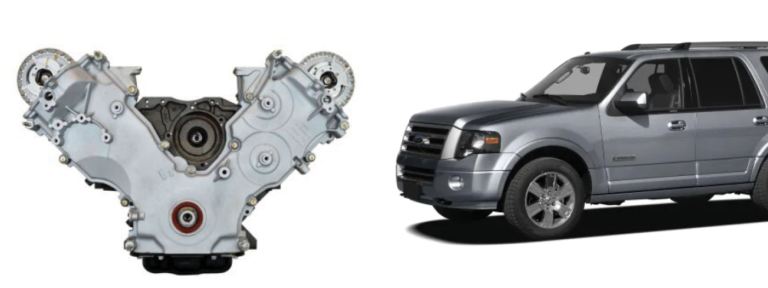
5.4L 3 Valve in the Expedition
This has got to be one of the worst Ford V8 engines. The F-series trucks used this 5.4-liter naturally aspirated eight-cylinder gasoline engine. Although the engine was first produced in 1997 the 3 valves that made an entry in 2004 until 2008 had the most glitches.
What are we looking at?
Timing chain problems, oiling problems, blown spark plugs, ignition problems, misfires.
The timing chain rattles and progressively damages the timing chain guides and in the worst-case scenario with the engine out of time, the pistons will hit the valves and destroy the engine.
Did I mention removing the spark plugs is the most arduous task? Unfortunately, the spark plugs have a silly design where only three threads hold the spark plug in place. Doesn’t take long for the plugs to eject and take with them the coil that sits on top.
Extracting the damaged spark plugs from an engine with eight plugs can take many hours because of the engine’s complicated design. This makes the 5.4L 3 valve another motor in the worst ford diesel engine list.
Worst Ford Engines - Ecoboost 1.0L
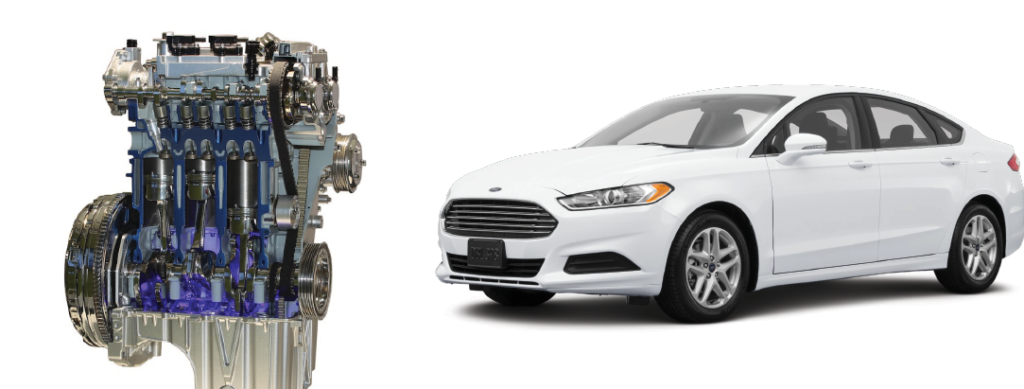
Ecoboost 1.0L in the Fusion
The last of the problematic motors is the most recent Ford 1.0-liter Ecoboost three-cylinder that surfaced in 2012. Eco-friendly yet powerful. This is a Ford Motor 1.0 liter turbocharged three-cylinder engine used to power subcompact cars and utility vehicles, or CUVs. This engine has an Inline configuration with a dual overhead cam (DOHC) design.
Vehicles using this engine including the Ford Focus and Ford C-Max.
Ford Ecoboost engine problems
Despite winning awards when it hit the market, this engine still posed several problems to customers especially after clocking high mileage. We are talking of..
- Clogged valves in the intake manifold also get clogged as a result of carbon build-up affecting their opening and closing.
- Coolant leaking and drains completely, resulting in overheated and damaged engines.
- On higher mileage EcoBoost engines, engine power loss and severe valve damage are common. Because the EcoBoost engine only uses direct fuel injection, carbon deposits on the intake valve stems restrict airflow.
- Overheating is the most significant and well-known drawback with EcoBoost engines. Early Ford EcoBoost models had nylon coolant pipes that were prone to failure at high temperatures.
Worst f150 engine - 4.6L 3valve
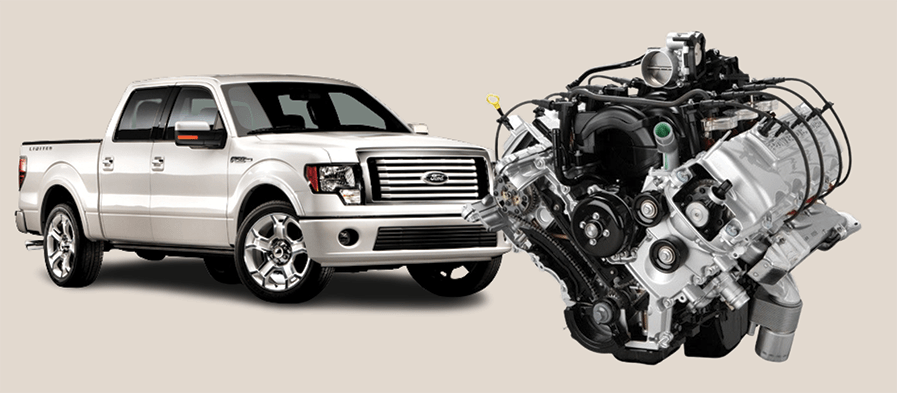
4.6L 3valve in the F-150
Let’s talk about the problems that affected the Ford F-150 4.6L 3 valve engine between 2008 and 2010. This engine presented owners with some serious issues, we are looking at:
- Low oil pressure and engine knocking: The engine made a knocking sound, and the oil pressure dropped. This happened because of a faulty oil pump or worn-out bearings.
- Spark plug breakages: In some cases, spark plug removal resulted in the plug heads breaking off in the cylinder head. Fixing this problem resulted in hefty bills.
- Cam phaser malfunction: When the cam phasers failed, the engine’s performance suffered, and it idled roughly. You could hear a ticking noise from the engine as a sign of this issue.
- Coolant leaks: The engine experienced leaks in different areas, like the intake manifold and water pump, causing trouble.
- Misfires and rough idling: The engine might misfire or idle roughly due to problems with ignition coils, spark plugs, or the fuel delivery system.
- Throttle body clogging: Carbon deposits could clog the throttle body, leading to reduced acceleration and engine stalling. Cleaning and maintenance were essential to avoid this.
- Vacuum leaks: Leaks in the vacuum system caused rough idling, decreased fuel efficiency, and even stalling.
- Fuel pump failures: The fuel pump could fail, affecting the truck’s reliability and performance.
- Timing chain issues: Problems with the timing chain also surfaced, posing another challenge for the 4.6L.
The Ford F-150 4.6L had its fair share of troubles during this period, but understanding these issues can help you tackle them better.
Wrapping up
While engine maintenance is touted as the best thing to avoid disappointments, some engines need more than rigorous maintenance.
It is recommended that new and experienced Ford owners avoid the engines listed above unless they are mechanically inclined or have a healthy repair budget. This guide helps you to know which Ford engines to stay away from.
Related articles


